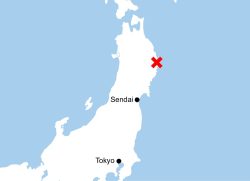PM’s Directive on Economic Measures: Don’t Continue Heedless Expansion of Expenditures
16:10 JST, October 9, 2024
The Japanese economy has reached a critical point where it needs to shift to a growth-oriented economy in which both wages and investments increase. Government spending must not be allowed to expand in a haphazard manner. It is important to devise effective ways to use funds to boost growth.
Prime Minister Shigeru Ishiba has instructed his Cabinet ministers to formulate economic measures, which will focus mainly on policies against high prices and those to promote wage increases. After the House of Representatives election to be held on Oct. 27, the prime minister intends to promptly make a decision on the economic measures and submit a supplementary budget plan for fiscal 2024 to the Diet, indicating financial resources to back up the spending.
Whether to continue energy price control measure will be a focal point.
A subsidy program for electricity and gas bills began in January 2023 in response to soaring crude oil and other prices caused by the crisis in Ukraine. The program was suspended once in May this year after the prices of crude oil and other products stabilized, but was resumed for only three months starting in August in the name of measures against the extremely hot summer.
The subsidy program for gasoline, which began in January 2022, has also been repeatedly extended and now has a deadline of the end of the year.
These subsidies have been criticized for reducing the incentive to save energy, which contributes to decarbonization, and for distorting the markets. They are not measures that can be continued endlessly.
A total of over ¥11 trillion has been allocated to these subsidy programs to date. Many point out that they have little policy effect that is commensurate with the huge amount of money spent. It is necessary to find a way to exit the programs.
Formulating economic measures based on the premise of budget scale should be refrained from.
The economic measures this time reportedly are expected to include the provision of benefits for low-income households as seen in the economic measures taken in autumn last year. It is troublesome if the government is going to promote pork-barrel budget spending as a step for the lower house election. Isn’t it imperative to address issues such as the rising price of rice?
Nonurgent and nonessential projects should not be mixed into the supplementary budget. The original purpose of a supplementary budget is to address unforeseen problems that arise during the course of the fiscal year.
The supplementary budget in fiscal 2019 before the COVID-19 pandemic was ¥3.2 trillion, and the size rarely exceeded ¥10 trillion in normal times. However, since the pandemic, large-scale supplementary budgets amounting to tens of trillions of yen have become the norm, and ¥13.1 trillion was appropriated in fiscal 2023.
The new administration must steadily promote the government policy to return the spending structure to normalcy.
Ishiba has said that he will continue the economic policies of the previous Cabinet of former Prime Minister Fumio Kishida, but there is a sense of unease in financial markets about his ability to carry out these policies. The specifics of his signature policy of regional revitalization are also unclear.
It is important for the new administration to solidify a firm growth strategy. It is reasonable to carefully consider economic vitalization measures based on this strategy and include the necessary funds for these measures in the initial budget for the next fiscal year, not in a supplementary budget.
(From The Yomiuri Shimbun, Oct. 9, 2024)
"Editorial & Columns" POPULAR ARTICLE
-

Artificial Intelligence Expands Possibilities for Foreign Language Learners
-

Build Intellectual, Physical Strength, As Well As Communicative Power / Japan Should Move from Beneficiary to Shaper of World Order
-

Global Economy in Turmoil: Prevent Free Trade System from Going Adrift / Risks to Financial Markets Must Be Heeded
-

Japan-China Strain Set to Persist as Beijing Officials Self-Interestedly Bash Tokyo; Takaichi Unlikely to Back Down
-

French and German Ambassadors to Japan Call for Democracies to Unite in Defense against Russian Disinformation
JN ACCESS RANKING
-

As Chinese Tourists Shun Japan, Hotels and Stores Suffer
-

Osaka-Kansai Expo’s Economic Impact Estimated at ¥3.6 Trillion, Takes Actual Visitor Numbers into Account
-

Japan Govt Adopts Measures to Curb Mega Solar Power Plant Projects Amid Environmental Concerns
-

BOJ Gov. Ueda: Highly Likely Mechanism for Rising Wages, Prices Will Be Maintained
-

Economic Security Panels Debate Supply Chains, Rare Earths; Participants Emphasize Importance of Cooperation Among Allies




















